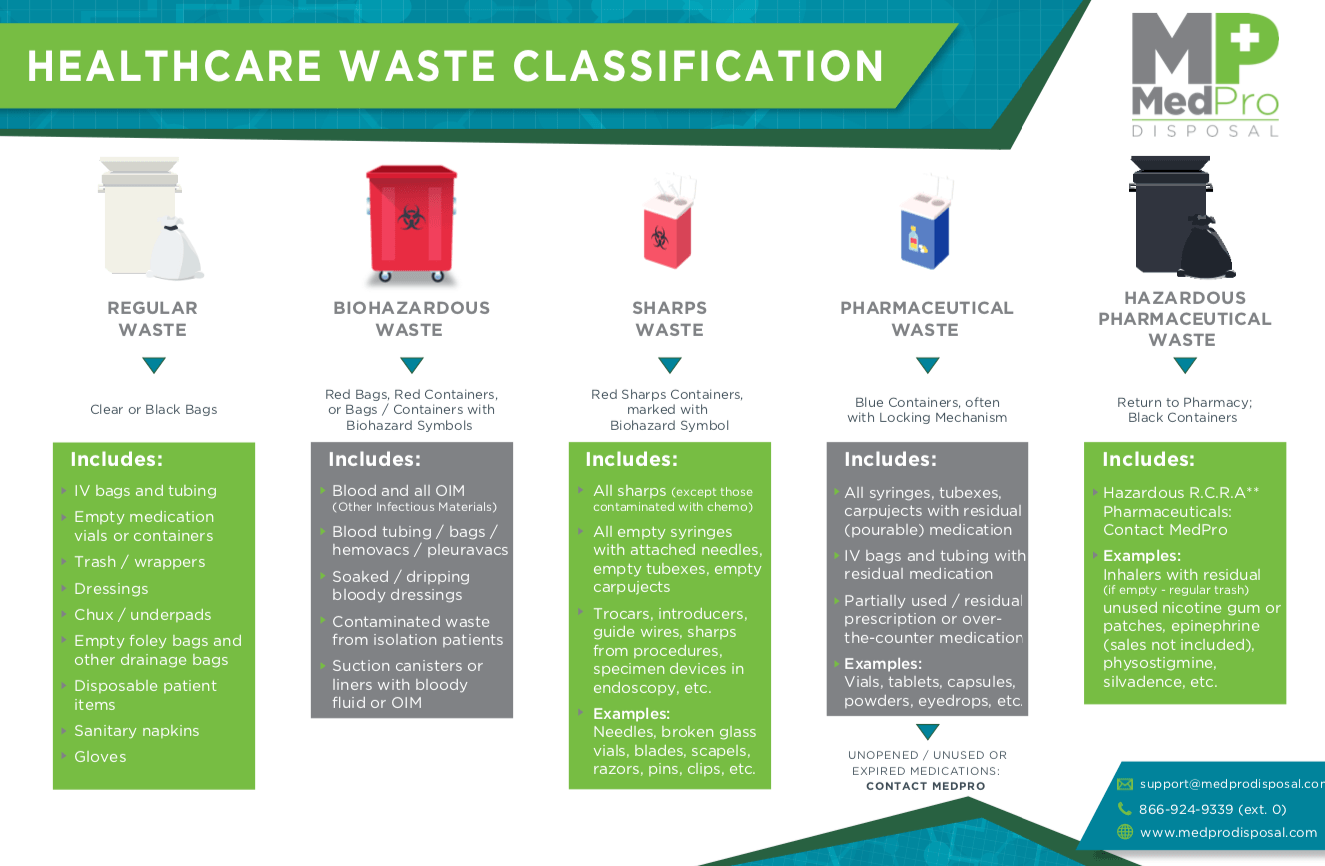Medical Waste Removal Quality: Your Trusted Companion in Safe Biohazard Disposal
Medical Waste Removal Quality: Your Trusted Companion in Safe Biohazard Disposal
Blog Article
Exploring Various Garbage Disposal Options for a Cleaner Setting
In the quest of a cleaner environment, the monitoring of waste disposal has emerged as a vital focal factor for lasting advancement. With a multitude of waste disposal choices offered, varying from standard garbage dump techniques to innovative waste-to-energy technologies, the option of just how we handle our waste has far-ranging ramifications for our planet's well-being.
Recycling Approaches
Executing effective reusing techniques is important in decreasing waste and advertising sustainability in our environment. Recycling includes the process of converting waste materials right into reusable items to avoid unnecessary disposal.
Another important recycling method is composting, which involves breaking down organic waste like food scraps and yard trimmings into nutrient-rich dirt. This process not just draws away natural waste from landfills yet additionally creates a beneficial source for gardening and agriculture. Additionally, upcycling is an imaginative recycling approach that entails transforming old or discarded products into products of higher high quality or value. By integrating these different recycling methods right into our waste monitoring techniques, we can substantially lower our environmental footprint and move in the direction of an extra sustainable future.

Composting Techniques
Effective waste monitoring techniques, such as recycling techniques, lead the way for a cleaner setting, and now, moving the focus to 'Composting Techniques', we explore lasting methods to decay natural waste for ecological benefit. medical waste removal near me.
Composting is an all-natural procedure that transforms organic waste, like food scraps and lawn trimmings, right into a nutrient-rich soil change. The secret to successful composting depends on producing the right balance of environment-friendly materials, such as vegetables and fruit scraps, and brown materials, like dried out twigs and leaves. These products decompose with the help of microbes, breaking down the waste into valuable compost.
There are various composting techniques offered to fit various requirements. Typical backyard composting includes layering natural products in a container or heap and routinely turning the mixture to aerate it. Vermicomposting, on the various other hand, utilizes worms to damage down raw material into garden compost (click here). For those with minimal room, indoor composting systems give a hassle-free option. By making use of composting methods, we can reduce the amount of waste sent to landfills while creating a useful product for enriching dirt and supporting plant development.
Incineration Pros and Cons
Incineration, as a waste disposal technique, offers both benefits and drawbacks that merit mindful factor to consider in the world of lasting waste management practices. On the favorable side, incineration can dramatically minimize the quantity of waste, reducing the requirement for land fill area and potentially decreasing greenhouse gas discharges. Incineration additionally enables the healing of energy via the generation of electrical power or heat, adding to resource recuperation. In addition, the process can be utilized to damage harmful compounds, using a safe method for handling particular sorts of waste that might posture risks to public health and the environment if left without treatment.
Nonetheless, there are remarkable downsides to incineration. One significant problem is the prospective launch of unsafe toxins into the air, such as dioxins, heavy steels, and particulate matter, which can have damaging impacts on human health and wellness and the atmosphere. Additionally, the high first investment and operational costs of incineration centers posture economic obstacles, making it a much less cost-efficient alternative contrasted to other waste management strategies. Mindful surveillance and policy are important to minimize these negative impacts and maximize the benefits of incineration as component of a detailed waste monitoring technique.
Landfill Administration Approaches
Landfills play a critical role in waste administration and environmental preservation by providing a containment system for the disposal of solid waste products. Reliable garbage dump management approaches are vital to reduce ecological influences and make certain the long-lasting sustainability of he has a good point these waste disposal websites. One vital strategy is appropriate waste compaction to maximize the usage of offered area within the garbage dump (click here). By condensing the waste, the volume is minimized, permitting even more waste to be suited over time.
Additionally, the execution of daily cover practices is essential in decreasing smells, avoiding trash, and decreasing the destination of insects. Treatment the disposed waste at the end of daily aids to contain odors and prevent prospective ecological contamination. Furthermore, the tracking of garbage dump gas exhausts and leachate degrees is important in guaranteeing that ecological criteria are met and that any kind of possible dangers to bordering communities are minimized.

Waste-to-Energy Technologies
One of the cutting-edge methods to waste management involves harnessing Waste-to-Energy technologies to transform solid waste right into usable energy sources. Waste-to-Energy (WtE) technologies include a variety of processes that intend to extract energy from waste materials via thermal, chemical, or biological means. This conversion procedure not just minimizes the quantity of waste that finishes up in garbage dumps but additionally creates useful power sources such as power, heat, or biofuels.
Incineration involves shedding waste at high temperature levels to produce heat and electricity. Gasification transforms waste into a syngas, which can be used for power generation or chemical manufacturing.
Carrying out Waste-to-Energy modern technologies can help reduce environmental problems connected with traditional garbage disposal techniques while at the same time giving a renewable resource source. Nonetheless, cautious factor to consider needs to be provided to discharges control and guaranteeing the sustainability of feedstock products for these modern technologies to be truly advantageous for a cleaner environment.

Verdict
In verdict, exploring numerous garbage disposal choices such as reusing, composting, incineration, land fill management, and waste-to-energy modern technologies is vital for advertising a cleaner atmosphere - click here. Each technique has its own advantages and challenges, however by utilizing a mix of these techniques, we can work towards decreasing the quantity of waste that ends up in garbage dumps and ultimately add to an extra sustainable future for generations ahead
With a wide variety of waste disposal alternatives available, varying from standard garbage dump techniques to innovative waste-to-energy technologies, the option of just how we manage our waste has significant ramifications for our world's health. medical waste removal.Incineration, as a waste disposal approach, presents both benefits and disadvantages that merit cautious consideration in the world of lasting waste management techniques.Garbage dumps play an essential duty in waste management and ecological preservation by giving a control system for the disposal of strong waste products. By condensing the waste, the volume is reduced, enabling for even more waste to be fit over time
One of the ingenious strategies to throw away monitoring entails harnessing Waste-to-Energy modern technologies to convert strong waste right into usable power resources.
Report this page